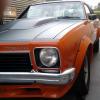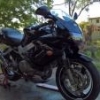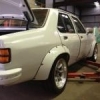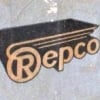The L34 code was actually first used for the 327 in HK.
The GMH L34 engine original development was partially done by Harry Firth and GMH for the Old Man Emu HT/HG Monaro. It was meant to be released as part of the LH XU2 at LH release but they shelved it and replaced with a 5.0L SLR. The car was later released with no RPO code just as an engine option that came with a lot of other.
The L34 engine wasn't carried over as such into A9X. GMH put all their homologation paperwork together as per the following to make it look like the L34 model continued into LX SL/R5000 and SS 5000 and then was replaced by the standard SL/R 5000 and SS 5000 from a certain date incorporating all the prior LX SL/R and SS 5000 L34 plus all the A9X goodies (when SLR5000 and SS with L31 became A9X). Smoke and mirrors!
Original homologation H2-4 was for the LH SL/R.
Variant 1/1V was for the SLR5000.
2/2V was for a 3.36 rear axle. None of these would have ever been made as the 3.36 was never available behind a V8. 15/5/74
3/3V was for what we know as the L34. 1/8/74
Evolution 4/1E was for was for new rocker arm studs, modified cylinder head to suit and for additional welding on the exhaust manifolds. Applicable only to SLR5000. 1/10/74 as are all the rest of the Evolutions and Variants up to 12/4V.
5/2E was to delete the timing chain damper. Applicable only to SLR5000.
6/3E was for 12 x stress relief holes on the clutch plate at pressed corners of the spring pockets. SLR5000 only.
7/4E was for 0.75" rear brake cylinders and new brake pedal assembly. SLR5000 L34 only.
8/5E new oil pump, new oil pump drive shaft and new water pump. New rocker covers both with the old HQ style oil filler caps. SLR5000 L34 only.
9/6E was Mods to rear axle control arm brackets to the underbody. SLR5000 L34 only.
10/7E was an alternative rear axle retainer.
11/8E was the alternative transmission with 2.32 1st gear.
12/4V was the 3.36 rear axle again.
13/9E was the LX SL/R (3.3L). February 1976.
14/5V was LX SLR5000. States a simple carry over from LH with minor changes. Feb 1976.
15/6V LX SS. 2 door carry over of SL/R. Feb 1976.
16/7V SS 5000.
17/8V alloy wheels as alternatives July 1977.
18/10E ADR27A 6cyl engine is SLR and SS/ July 1976
19/11E ADR27A 5.0L engines in SL/R 5000 and SS 5000. February 1976.
20/9V LH SL/R 5000 L34 variant continues in the LX SL/R 5000 L34 vehicle incorporating 13/9E and 14/5V.
21/12E. From 1 September 1977, SLR 5000 and L34 models discontinued . New model SL/R 5000 with specs as per LX SL/R 5000 L34 with 10 page list of exceptions (this is A9X introduction). Valid from 7/9/76 (not a typo).
22/13E. From 1st September 1977 the specs of the SS 5000 model is varied to include the mechanical specs applicable to the SL/R 5000 as referred to in 21/12E. Plus coachwork mods (pictures of HF-111).
23/10V Borg Warner T10 as alternative gearbox to SL/R 5000 and SS 5000.
24/1E turns lock to lock changed. November 1976.
25/15E a big BS spiel about SL/R and SS evolving from S through the SL. Sept 1977.
26/16E. From 15/9/77 wider flares.
27/17E. UCA running change.
28/11V. Cast iron Borg Warner replaces old T10 with new ratios.
29/12V 3.90:1 rear axle . May 1978.
28/18E. Forged pistons, two different suppliers.
29/19E. Crankshaft weight change.
The L34 was a standard 308 with better rods, revised HJ style block, heads modified for larger valves, modified rockers, different pistons and the other external mods that couldn't be changed under Group C (intake, headers, dizzy etc).
As you can see GMH homologated new stuff along the way right up until the end of A9X's racing life.
From memory (Laurie will correct if wrong), the VB Commodore was raced using the same engines but the A9X lost a few things to hobble it like the rear spoiler and the rear discs. CAMS made HDT use standard size valves, which is what led Brock and HDT to make that VC. It was essentially an L34 version of the XT5 blue 308 with less compression but the bigger HJ-VL camshaft. It didn't have the exhaust headers or the wierdo dizzy but I don't think it had to under the early 80's rules. VH further improved things, but that V5H VC-VK engine was essentially an improved L34 engine.











 View Garage
View Garage









